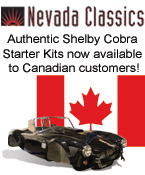 
 Main Menu
Main Menu
|
 Nevada Classics
Nevada Classics
|
 Advertise at CC
Advertise at CC
|
 November 2024
November 2024
|
| S |
M |
T |
W |
T |
F |
S |
| |
|
|
|
|
1 |
2 |
| 3 |
4 |
5 |
6 |
7 |
8 |
9 |
| 10 |
11 |
12 |
13 |
14 |
15 |
16 |
| 17 |
18 |
19 |
20 |
21 |
22 |
23 |
| 24 |
25 |
26 |
27 |
28 |
29 |
30 |
|
 CC Advertisers
CC Advertisers
|
|

07-16-2004, 12:40 PM
|
|
CC Member

|
|
|
Join Date: Apr 2001
Location: Abe Lincolns Birthplace,
Ky
Cobra Make, Engine: CSX4761, KCR Shelby Alloy 496,760hp
Posts: 867
|
|

 Not Ranked
Not Ranked
Midohasp
WOW,,I hate to start crap,but the 428 dual quad was availible ONLY in the woodgrain model with the optional dead mother in law roof rack,I am suprised you didnt know this.
:} Tim
__________________
Tk
"this whole Adult thing just isnt working for me "
|
-
Advertising


07-16-2004, 03:53 PM
|
|
CC Member

|
|
|
Join Date: Jun 2001
Location: MIDWEST,
Posts: 750
|
|

 Not Ranked
Not Ranked
If a magazine is going to compare Chevrolet's "best" 427 engine (ZL-1), than they should compare it to Ford's "best" 427 engine, the 427 SOHC.
|

07-16-2004, 03:59 PM
|
|
CC Member

|
|
|
Join Date: Apr 2001
Location: Abe Lincolns Birthplace,
Ky
Cobra Make, Engine: CSX4761, KCR Shelby Alloy 496,760hp
Posts: 867
|
|

 Not Ranked
Not Ranked
thats my take on it too,,or at least used a normal production 427 chevy from 65,,
__________________
Tk
"this whole Adult thing just isnt working for me "
|

07-16-2004, 07:47 PM
|
|
CC Member

|
|
|
Join Date: Jul 2004
Cobra Make, Engine:
Posts: 126
|
|

 Not Ranked
Not Ranked
JP...the Country Squire SW Sports compact was slated for a Cleveland, but they really never produced one..I know, I had one. They also offered a three way valve which, in either forward or reverse, would allow the passanget seat to fully recline. These valves would fail from time to time, causing a terrible electrical short that would render the retractable top inop. Ford finally had to discontinue the valve option.
|

07-16-2004, 07:49 PM
|
|
CC Member

|
|
|
Join Date: Jul 2004
Cobra Make, Engine:
Posts: 126
|
|

 Not Ranked
Not Ranked
BTW...Shelby did go to GM for the SBC for his first choice , but that was when they were still going to england and working on the AC's over there. GM turned him down. The first Cobra's were built in England.
|

07-16-2004, 08:27 PM
|
 |
CC Member

|
|
|
Join Date: Feb 2001
Location: St. Louis, Missouri,
MO
Cobra Make, Engine: SPO 2715
Posts: 1,648
|
|

 Not Ranked
Not Ranked
 Holy Cow
Holy Cow
I just read all the posts on this thread.....WOW!
I was just writing back and forth with a KCR engine owner the other day (reguarding a future build I want), and the numbers he got from KCR on the engine and chassis dyno, backed up the numbers. There is around 110 hp loss from fwhp, to rwhp on a SPF, and his numbers were right on. He was very happy with his motor.
So before I read this thread, and now after, I think his numbers are correct.
When I first read Steelcomp's message about the Kit Car industry, I was glad I drive a "replicar" (per Superformance)... 
Cracker, this is my first post on this thread, if you are still keeping count..... 
"BTW...put more than 5 lbs boost on a 4.6 (like what's in the Lightning), and you'll spit the rods out the pan." per Steelcomp.
I am not picking on you, but the Lightning is a 5.4 motor, and the factory pulley is about 10 lbs of boost stock. I have seen over 16 lbs on the stock rotating assembly, but with the right build you could go even further. The MM&FF August 2002 has a good article on the "Johnny Lightning 6 lb kit", which "adds" 6lbs of boost to 14 lbs on the old Lightning. But I think the new ones are 9 or 10 lbs. If I got you comment wrong, I apologize in advance.
I wish I would see more KCR in MM&FF. But they focus a lot on the mod motors, and small blocks. They use Westech too much (bunch of Brand-Xers).
When we ran FEs in High School, we thought it stood for "Flying Engine parts". (there were no rev limiters then, and oiling was not so good. Had a 56 427 two door, that would smoke anything except the hard core street racers from North St. Louis. LOL, if you won a race with them, you still might get beat up for the effort!...lol. Had a 406 in a Galaxie too. My buddy ran a 429 with super long rods, man that was a fast Torino.
I am a fan of every motor Ford, but the FE motor makes your Cobra more valuable, and more correct to the person on the street I think. So it's not the hp for the most part, it is the type of motor that the owners like IMO. The aluminum is nice, off setting the weight, and the motor fits the engine compartment well.
Aluminum 460 block???? sweet.
I enjoyed reading this thread.
Eric 
PS I forgot, Hot Rod had an article on "The Hulk" from KCR, it was like 640 hp on pump gas, and was a SB 408 build. So 700 plus from an FE, ??????????
Last edited by Great Asp; 07-16-2004 at 08:33 PM..
|

07-16-2004, 08:47 PM
|
|
CC Member

|
|
|
Join Date: Jul 2004
Cobra Make, Engine:
Posts: 126
|
|

 Not Ranked
Not Ranked
Great ASP (Eric)
I wasn't sure what the boost is, and you're right, the Lightning is a 5.4, but I was going by what a good friend of mine who is the service director in a very large Las Vegas Ford dealership has ben telling me. Every Lightning they have sold, (and others) that the owner has gone with the Ford upgrade pulley swap (for increased boost) has thrown the rods out the pan. The bottom can't take it. I know they make awsome power, but the mag's aren't going to tell you the whole story...they never do. They're just trying to sell mag's.
I was just addressing the issue that was brought up about the cross bolt mains being "superior". I was agreeing with the post that disagreed.
No harm, no foul, and thankyou for offering the info. Glad to get your input.
|

07-16-2004, 08:52 PM
|
|
Senior Club Cobra Member

|
|
|
Join Date: Jul 2002
Cobra Make, Engine:
Posts: 15,712
|
|

 Not Ranked
Not Ranked
I'm always a sucker for the "Shelby went to Chevy" first comments. Shelby went to a LOT of people in search of the right combination of car and engine to put together his dream. Oldsmobile was higher on his list than Chev. Donald Healey (Austin Healey) was among other also contacted.
If I had a business I was trying to get going I'd take investors where I could find them. I might even swallow my pride and ask Chevy, but I'd hate myself in the morning!   |

07-16-2004, 08:55 PM
|
 |
CC Member

|
|
|
Join Date: Feb 2001
Location: St. Louis, Missouri,
MO
Cobra Make, Engine: SPO 2715
Posts: 1,648
|
|

 Not Ranked
Not Ranked
 16 is not bad
16 is not bad
Steelcomp,
I am a member of Fords Unlimited here in St. Louis, and we have 4 guys running 13 to 16 lbs on their Lightnings. I ask tomorrow at the "Blue Cruise", but I am not aware of bottom end problems on stock bottoms of the 5.4
But you know how it goes, the dealership has everyone looking for "warranty"....he-he.
Eric  |

07-16-2004, 09:25 PM
|
|
CC Member

|
|
|
Join Date: Jul 2004
Cobra Make, Engine:
Posts: 126
|
|

 Not Ranked
Not Ranked
Too true, Slick, too true!!
|

07-16-2004, 09:44 PM
|
 |
CC Member

|
|
|
Join Date: May 2004
Location: Palm Coast,
FL
Cobra Make, Engine: Shelby American CSX 4241 - authentically built
Posts: 2,573
|
|

 Not Ranked
Not Ranked

Now you guys are talking my language, Lightnings :-). My company is the country's foremost authority on Lightning performance.
The Lightning 5.4 does have issues. The 99-00 motors took everything we threw at them. But in 01, we think Ford changed rod vendors, and many 01-04 Lightnings throw rods when they reach just over the 450 rwhp mark. This is not just Lightnings, but also true of the 2V GT motors. Poor tuning also contributes to this (too much timing), maybe moreso then just reaching a certain power level.
Once you swap out the rods and pistons (stock pistons are forged, but obviously not the same quality as an aftermarket piston), the 5.4 is a stout motor. The nice thing about the modular motors, is the blocks are just plain awesome. You can make WELL over 1000hp in a stock modular block. Ironically, the main cap and block skirt design is like the crossbolt 427. The block extends down past the mains, and the bottom of the motor is all tied together in a square.
Now the 03 Cobra motor is a different story. They come from Ford with Manley H beam rods. Plus all Cobra motors are hand built by two engine builders, so I'm sure that plays into build quality. A stock 03 Cobra motor can make 700 hp with no sweat.
__________________
Sal Mennella
CSX 4241, KMP 357 - sold and missed, CSX 4819 - cancelled, FFR 5132 - sold
See my car at CSXinfo.net here >> CSX 4241
|

07-17-2004, 11:53 AM
|
|
CC Member

|
|
|
Join Date: Sep 2002
Location: Chicago, Oscar winner, my kind of town,
Posts: 614
|
|

 Not Ranked
Not Ranked

Quote:
Originally posted by steelcomp
I was just addressing the issue that was brought up about the cross bolt mains being "superior". I was agreeing with the post that disagreed.
|
Crossbolts are superior.
Chebby and later Limas and Clevelands tried to "crossbolt" their mains as best they could with splayed 4 bolt maincaps.
When it came time to design new engines at GM (LS-1), Ford (modulars), and Chrysler (new Hemi), ALL went with a deep-skirted crossbolted bottom end. Why? Because it's a better design.
They did NOT go with the "pour more iron in the mold" concept of Electromotive's locomotive division of strong engine block design.
The best thing about a Lima engine is its sheer mass and size. It has a LOT of iron, to make up for it's otherwise poorly engineered bottom end. Put enough iron around the caps of any engine and it'll hold together better than an engine that is purpose-designed for a specific use and function like the FE. The FE is a thinwall casting...both its failing and its strongpoint. With thin walls, it is displacement-challenged. But also, with thinwalls, it is relatively lightweight, with the crossbolting as a engineered design complementing its otherwise lightweight structure. The Lima is a Hulk, caring not about finesse or design elegance. More iron, more girth, more bulk, all are good, if you aren't worried about the effect of all that mass on handling and don't care about elegant design. Kind of like my wife's delicate ankles vs some of the I-beams I see stomping around under some women. No, she'll never lift 500lbs overhead, but is that what I care about?
It's about good design, elegant design, just plain design, from a time when engineers counted for more than the marketing spinmeisters.
Last edited by Sizzler; 07-17-2004 at 12:36 PM..
|

07-17-2004, 01:13 PM
|
|
CC Member

|
|
|
Join Date: Apr 1999
Location: cleveland,
OH
Cobra Make, Engine: CSX4000, 427
Posts: 1,999
|
|

 Not Ranked
Not Ranked

Regarding comparing the ZL1 to a ford 427, I thought it was an appropriate comparison, as both were basically the top engine options available as an installed in cars. SOHC's were never installed in cars. Although they only buiilt 71 ZL1's, as installed in vehicles, the ZL1 was just an aluminum block version of the L88, which they made a little more of. Both engines shared the same cam, piston's, heads, carburetor -- I'm pretty sure.
Steelcomp, it's good to find someone that shares their opinion that the 385 is Ford's version of the BBC, with Ford copying chevy's design, with some alterations. The engineer who designed the BBC even stated so about the 335/385 Ford's.
This has been discussed before to some extent.
BBF Wins PHR Engine Masters!!
I have to say your resume sounds extremely impressive, experience I wish I had, but I chose a different career, sometimes regretting it. Although the Ford has a higher deck, and bigger bore spacing, which makes it advantageous for very large displacement engines, the BBC I think was designed specifically for NASCAR 7 liter limit, 427 ci in 1964-65. I don't believe chevy had intentions of building 600 ci+ monsters that are being built today. Maybe you can shed some light on this, but I think there are optimal bore/stroke sizes for any given displacement, so even though the 385 has a bigger chamber, larger valves or unshrouding of valves, in a 427 ci engine, I don't think its advantage is that great over a BBC. At 600+ ci, I'm sure it would make a difference. SAme with deck height and rod length, at 427 ci, I'm not sure of the significance of the advantage. The BBC does have smaller rod journals, for less friction though. And, chevy has been very good in keeping basic design parameters the same between engines, allowing easy engine swapping, part swapping between different cars and parts, where Ford seems to come up with a different design for each engine, dampner's, flywheels. bell housings. distributor, engine mounts, etc. I don't think the BBC was a bad design for what it was intended for, and Ford just took chevy's design and made it better, in some respects, depending upon the purpose of the engine.
As far as cross bolt mains, I would think it is a better design than the splayed 4 bolt BBC / 385 design, but I haven't done/read stress analysis on it. I know that the 426 hemis had deep skirts and cross bolts. I assumed that when chevy designed the SBC an then the BBC, the smaller skirt meant less weight, not more strength, even with the 4 bolt mains. Regarding what Sizzler stated, about weight, I don't think chevy ever used high nickel in thier castings, and as such, the SBC, and especially the BBC, were/are heavy relative for their size. I read somewhere that Oldsmobile used high nickel castings, and as such, made their castings thinner, such that a 455 block weighs the same, or a little more than a SBC block. So I guess there was truly a need for an aluminum BBC block. I guess Ford followed the same design as the BBC as far as casting design went. Probably with thicker (heavier) casting, there was greater room for error with respect to core shifting, rejecting engine blocks.
In my opinion the 385 was not a total design for performance, it was designed for performance for a production based engine. To me, the Cosworth ford was an engine designed for performance. The best V type engine design I have ever seen was an Allison V-12, 1710 ci, 900 lbs, all aluminum, 4 valves/cylinder, twin plugs, most bolt shanks were undercut for weight savings. Truly a purpose designed engine - maximum reliability and performance for lowest weight. The guy down the street rebuilds them. Truly a better engine design than the often proclaimed Rolls Royce Merlin.
I enjoy all of this theoretical stuff, that is, for us hobbiests.
__________________
"After jumping into an early lead, Miles pitted for no reason. He let the entire field go by before re-entering the race. The crowd was jumping up and down as he stunned the Chevrolet drivers by easily passing the entire field to finish second behind MacDonald's other team Cobra. The Corvette people were completely demoralized."
Last edited by Anthony; 07-17-2004 at 01:24 PM..
|

07-17-2004, 01:23 PM
|
|
CC Member

|
|
|
Join Date: Jul 2004
Cobra Make, Engine:
Posts: 126
|
|

 Not Ranked
Not Ranked

The cross bolt design was a compromise that the Ford engineers came up as the only practical way to strengthen the bottom end as they were adding more cubes and power to the FE. Remember, the first FE was a 352" two bolt main. Cross bolting hadn't even been thought of yet. The deep Y block design was a carry over from the 292/312.
A splayed bolt design is the best of both worlds as far as "four bolt mains" are concerned. The extra bolts were originally added more as a means of controlling cap walk at higher rpm, than to actually "strengthen" the bottom end. Most two bolt bottoms will take tons of HP if the rpms are kept to about 6000. The "cross bolt" design controls cap walk very effectively, but realy does nothing to strengthen the bottom end vertically. Bolts in shear have far less strength than bolts in tension, and there is no vertical indexing with the cross bolt design, so "cross bolting" adds very little to the vertical strength of the bottom end. (The cap can still move vertically in relation to the block) The splayed bottom end offers both the lateral retention and the added vertical strength of an extra main bolt, offering the best of both worlds. The ultimate block is the design with four vertical main bolts as well as a cross bolt design, which is what you'll see in the high hp drag racing blocks like the JP1, KB, and Rodeck blocks used in Top Fuel and Top Alcohol. They actually use two cross bolts on each side of the cap. I'm not sure, but I think the Ford Mod motor has a version of four mains and a cross bolt. That's stout!!
From a mfg standpoint, the deep skirt design has many benefits besides being stronger, which were taken into consideration when going to that design.

|

07-17-2004, 01:38 PM
|
|
CC Member

|
|
|
Join Date: Apr 1999
Location: cleveland,
OH
Cobra Make, Engine: CSX4000, 427
Posts: 1,999
|
|

 Not Ranked
Not Ranked
Steelcomp, but for a production/performance engine, what is more prone to cause bottom end failure, cap walk or vertical strength failure. I had just assumed it to be cap walk, to "strengthen the bottom end from flexing". When bearing failure occurred in NASCAR, in the 60's, was it because of cap walk or because of vertical bolt failure? If it was cap walk, then I think the appropriate design alteration was to install cross bolts, assuming cross bolts are better for cap walk than 2 additional vertical splayed bolts. We're talking production engines here, not top fuel engines, engines that are built on assembly lines. My shelby block has 4 cross bolts per bearing.
I haven't looked at a FE block in the last day or so, But I think there is enough of room to make the caps/webs wider, so splayed 4 bolts could have been incorporated in the design, but what forever reason, ford decided to go wiht the cross bolts.
__________________
"After jumping into an early lead, Miles pitted for no reason. He let the entire field go by before re-entering the race. The crowd was jumping up and down as he stunned the Chevrolet drivers by easily passing the entire field to finish second behind MacDonald's other team Cobra. The Corvette people were completely demoralized."
Last edited by Anthony; 07-17-2004 at 01:42 PM..
|

07-17-2004, 02:07 PM
|
|
CC Member

|
|
|
Join Date: Sep 2002
Location: Chicago, Oscar winner, my kind of town,
Posts: 614
|
|

 Not Ranked
Not Ranked

Quote:
|
Splayed 4-bolt main caps were developed as a “cure” for the main web “splitting” that was common to OEM 2-bolt Chevy blocks in competition applications. By angling the outboard bolts, it helped “pull” the block together. Moreover, there simply isn’t enough “meat” in the webs to add bolts in the normal manner.
|
Keith Craft's main girdle for the FE does the same thing. It doesn't attempt to stop up/down motion in the caps, it just ties together the bottom of the block, mostly side-to-side, with a relatively flexible (up/down) structure using the maincaps and oilpan rail. His girdle he only recommends in 600+HP situations, for the same reasons, to prevent splitting the bottom of the block "in competition applications".
I think we all need to keep in mind the intended purpose of whatever engine is being judged, and judge it on that level, not try to put down an engine which may fail at a level it was never intended to be used on, not to judge a hill against a mountain, or an engine that was subject to different rules and limits against one that had only one limit: none.

|

07-17-2004, 02:34 PM
|
|
CC Member

|
|
|
Join Date: Apr 2001
Location: Abe Lincolns Birthplace,
Ky
Cobra Make, Engine: CSX4761, KCR Shelby Alloy 496,760hp
Posts: 867
|
|

 Not Ranked
Not Ranked
I think the fair comparison would have been the lo riser versus a 65 chevy427/435,or better still,,maybe the ZL1 versus a high rise or tunnel port,what we got was chevys best to fords best 5 year older engine,,but then again its still a chevy world,Tim
__________________
Tk
"this whole Adult thing just isnt working for me "
|

07-17-2004, 02:36 PM
|
|
CC Member

|
|
|
Join Date: Jul 2004
Cobra Make, Engine:
Posts: 126
|
|

 Not Ranked
Not Ranked

Dave, you made some good observations and I'll try and shed some light where I can. I'm not as "versed" on GM's history and their design criteria, so I can't, without doing some research, speak to the purpose behind their BB design. The comments I made as far as the 385 being a "performance design" were of course made within the considerations of a production application.
There are, as KC stated earlier, few parts in a contemporary race motor, that can be related to the production engines. Most of the info I have been offering has been directed at factory design, and production performance, which, as KC also stated, was all we had twenty years ago. BUT... the outgrowth of what we have today came from those factory designs. The BBF offered many of the ideas that are still being built around today, and were copied by most of the other mfgr's.
I was just visiting some friends at Johnson Racing yesterday and was trying to get cought up with what's going on these days. In the world of drag racing, things are going crazy. IHRA is allowing these guys to build 800+ inch motors!! They have all gone to a 5" bore center. NHRA with their Pro Stock class is still limited to 500" and a 4.9" bore ctr. But it was interesting that the comments regarding changing bore centers were all based on (copying) the Ford 385 design.
The BBF was designed at a time where big cubic inches were becoming the vision, and HP was being found at higher rpm's. For that purpose, the BBC was limited. (Don't forget, in 64/65, 427" was a BIG engine) The BBC engine builders had a terrible time with the heads trying to get the different port designs (long/ short runner, left/ right turn...in the same head) delivering the same performance. They were a porting and tuning nightmare. We already touched on chamber design and valve angles.
The bore/ stroke issues are the same. Optimal is a relative term...the application has a lot to do with the design. The BBC has a very poor rod length to stroke ratio which is an important factor in general engine performance. This is a result of their compact design, but not in their favor as far as performance. Unfortunately there hasn't really been the kind of r&d done on the smaller cube 429 as there was on the 427 BBC, but even in that displacement, the BBF has the same advantages I have mentioned. Equally built, the BBF would have the advantage. The only disadvantage the BBF has in the smaller CI range, with the tall deck design, is intake runner length. The BBC has a much shorter runner length and this can result in more HP potential, (again, depending on application) but not in torque, although I think with today's intake technology, that isn't as much a problem. The 351W has the same problem. Ken Duttweiler did an experiment years ago with the best 351 parts he could get, and a comprable 350 SBC. He simply couldn't (at that time) get the HP out of the Windsor as he could the Chev, and he attributed it to intake runner length.
In any case, the larger the bore, the better the breathing potential, and the better the rod/stroke ratio, the better the dynamics, weather at 200ci or 800". The 800" motors give up the stroke/rod ratio over shear CI displacement, but make enough power to justify it.
Difference in designs has always been a Ford "problem" but once you learn about Fords, there's a lot more interchangeability than it seems. There's also a lot more combinations and options available with Fords, IMHO. (in my humble opinion) I think you hit the nail on the head when you said that "Ford just took Chevy's design and made it better, in some respects, depending on the (application). The BBC was (is) not a bad engine. It was a stepping stone in design ideas which inspired many new ideas.
Ahh, the Allison. An incredible engine! And the Cosworth. You're right, both designed for very specific purposes. Again, my input had been intended for "production" based designs that engineers had to take many different applications and expenses into consideration. "Purpose built" designs like these two works of art are far more specific, and can eliminate a lot of waste and "over design" resulting in a much more refined package, and better outcome. BTW...most of the undercut bolts were designed that way for a more consistant bolt stretch, as an engineering consideration, rather than save weight, but again, a testimant to the detail that can be given to such designs.

|

07-17-2004, 02:52 PM
|
|
CC Member

|
|
|
Join Date: Mar 1999
Location: penn.,
Posts: 2,559
|
|

 Not Ranked
Not Ranked
Since we like to discuss history in this thread, can anyone explain the Can-Am series dominance by the Big Block Chevy. More developement in that time frame than Ford has put into the "Superior" 385 series engine in 30 years. Also ,you can still get an all aluminum ZL-1 engine thu GM performance parts(an updated version) www.paceperformance.com |

07-17-2004, 03:22 PM
|
|
CC Member

|
|
|
Join Date: Jun 2001
Location: MIDWEST,
Posts: 750
|
|

 Not Ranked
Not Ranked
How many "CAN-AM" Chevrolet big blocks are running around compared to 514 c.i engine's? For the price there is not a more reliable, "horsepower for dollar" big block engine made by anyone, period.
|
 Posting Rules
Posting Rules
|
You may not post new threads
You may not post replies
You may not post attachments
You may not edit your posts
HTML code is Off
|
|
|
All times are GMT -7. The time now is 07:36 AM.
|




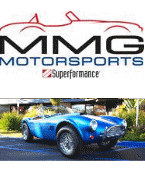
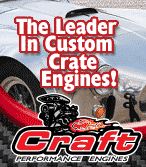

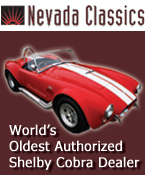

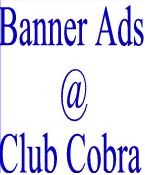
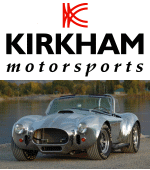

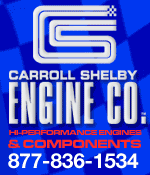









 Linear Mode
Linear Mode



